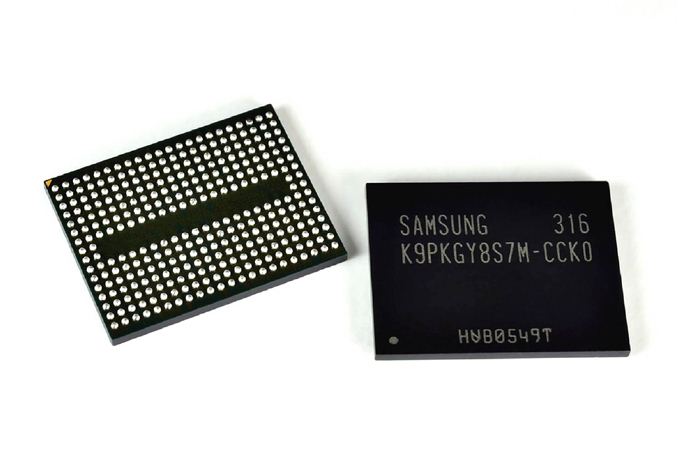Samsung’s 3D Vertical NAND Set to Improve NAND Densities
by Jarred Walton on August 6, 2013 6:12 PM EST
Ars Technica has posted information on Samsung’s new 3D Vertical NAND technology, and it promises to boost densities for SSDs and other similar devices dramatically. Samsung announced last night that they have begun mass production of the devices.
Using up to 24 vertical NAND elements, Samsung predicts that they will be able to scale up to 1Tb per individual NAND chip. It’s not clear exactly how large the initial chips will be, but with conventional 19nm NAND currently shipping in 128Gb capacities we’d expect at least two to four times as much storage per chip. That means using current SSD standards of eight channels of NAND we’d see capacities for “commodity” SSDs move from 128GB to 256GB or even 512GB, and with four NAND die per package we could easily hit 2TB SSDs. The days of needing a secondary storage device with a hard drive could be quickly coming to a close depending on the timing and pricing.
There’s a second technology also coming into play with V-NAND that addresses concerns with reliability and longevity of NAND. Rather than storing charge in a set of floating gate transistors, with voltage levels corresponding to either 0/1 (SLC), 00/01/10/11 (MLC), or 000/001/010/011/100/101/110/111 (TLC), V-NAND will use Charge Trap Flash (CTF). Samsung states, “With Samsung's CTF-based NAND flash architecture, an electric charge is temporarily placed in a holding chamber of the non-conductive layer of flash that is composed of silicon nitride (SiN), instead of using a floating gate to prevent interference between neighboring cells.” Samsung claims that at a minimum CTF will have at least 2x the lifespan of floating gate NAND, and potentially as much as a 10x increase. Write performance is also doubled relative to conventional 10nm-class floating gate NAND.
Sadly, there’s no specific word on availability or pricing right now, and historically with V-NAND just entering mass production we’re likely a year or more away from production SSDs using the technology. Samsung is obviously a major player in both the NAND and SSD markets, so Samsung SSDs using V-NAND are inevitable, but testing and validation will certainly require some time. Hopefully this all comes sooner rather than later, though, as the potential to ditch conventional storage and get improved performance and reliability compared to current NAND seems like the perfect storm needed to end our reliance on slow, spinning platters.
Source: Ars Technica










33 Comments
View All Comments
glugglug - Wednesday, August 7, 2013 - link
How long before this gets obsoleted by memristors?FunBunny2 - Wednesday, August 7, 2013 - link
Well, Western bought STEC, which had bought Unity, which was developing its version of memristor. HP started it all, IIRC. There's a bunch of candidates to replace NAND/NOR flash. Have been for more than a decade. Stacking may just make those replacements replaceable.bellasys - Tuesday, September 9, 2014 - link
For posteriority, it looks like a year since these have gone into "mass production" and now these are available for what looks like competitive pricing (to grab the early adopters) before literally lowering the boom on HDD.